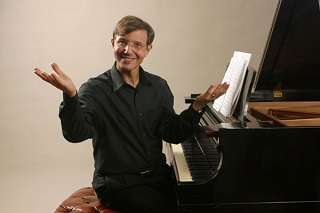|
|
|
Back
Seventh Heave New York
Kaufmann Concert Hall
01/27/2020 -
Ludwig van Beethoven: Symphony No. 7 in A Major, Op. 92
Manhattan School of Music Chamber Sinfonia, Rob Kapilow (presenter)

R. Kapilow (© Peter Schaaf)
“the apotheosis of the dance”
Richard Wagner
As a music student in high school and college I had the great good fortune to hook up with a number of learned and sometimes interesting teachers, yet I would have traded them all for Rob Kapilow had I the opportunity. He has not only the knowledge but an amazing ability to communicate and make his arguments stick in both the mind and the heart. I have learned much over the years by attending his unique combinations of humor and profundity.
He employs a simple yet complicated teaching technique that is always the same but never repetitive. First we have a lecture and then a performance. Not an unheard of construction but one that somehow seems fresh each time we experience it.
For this performance Kapilow had an entire orchestra as a sidekick and employed them judiciously but entertainingly throughout. He structured his lecture in four movements:
1. What is Becoming not Being: Maestro spent a good deal of time placing the Seventh Symphony in context. Written the same year as his Wellington’s Victory, the symphony was subsumed by the more popular historical re-enactment. Carl Maria von Weber wrote about the symphony that “Beethoven was ready for the madhouse.” Maestro Kapilow suggested that the work was simply too revolutionary for its time, as it “shows us the plumbing” in his very descriptive phrase. The orchestra performed brilliantly, the two horns successfully intoning the famous calls with accuracy and panache at the movement’s conclusion. These were not just youthful but also accomplished musicians.
2. Adventures in Intensity: The famous slow movement – perhaps the greatest in the Beethovenian repertoire – was examined with classical deconstruction. The most distinctive movement in all of Beethoven, it was dissected and presented with a combination of forensic science and artistic love.
3. Just Kidding: The third movement is a study in repetition that crosses the line between exposition and tomfoolery. The third repeat of the scherzo is followed by the third iteration of the trio – but wait! – the structure crumbles at just this time. Mr. Kapilow describes this moment as the composer shouting “just kidding.” A fresh and fascinating perspective.
4. Search for a Key: The Allegro con brio seems lost in a jungle of possible keys only to reconcile at the last moment. Mr. Kapilow pounds home this point by starting and stopping the youthful orchestra to create a “lost in the wilderness” scenario.
All this as an introduction to a very fine performance of the piece as a whole. The audience left not only entertained but just a little bit wiser about music in general.
I studied with Estonian composer Avo Sõmer and once he sat down at the piano and played a few measures from Bartók’s Concerto for Orchestra. Afterwards he asked the class “Can anyone besides Mr. Kirshnit tell me what that was?” I get the same degree of love and respect when being fortunate enough to hear Rob Kapilow.
Fred Kirshnit
|
|
|
Copyright ©ConcertoNet.com